From Flash to Green Lantern, DC Comics has consistently featured the theme of legacy as a central focus of its stories. DC heroes have been passing their mantles on for generations to ensure that their core ideals of freedom, equality, and justice live on forever. Many of the heroes who take on these mantles had grown up inspired by the heroic exploits of their predecessors and wished to continue their legacies and their ideologies. However, DC has one underrated legacy hero that challenges these notions in a bold and exciting way.
Videos by ComicBook.com
Introduced in Doomsday Clock, the sequel to the acclaimed comic series Watchmen, Reggie Long, the second Rorschach, deserves more respect as he deconstructs the concept of legacy and hero worship. There are two reasons why Reggie is underrated and not as well-known as some other legacy heroes, such as Barry Allen or Hal Jordan. The first reason is that Reggie has far fewer appearances in comics, as he only appeared in 12 issues. This means that not many people are aware of his existence as there’s less material the presents his exploits. The second reason is that many fans were not open to the idea of a Watchmen sequel. Many people unfairly declared that Reggie’s mere existence somehow tainted the Rorschach and Watchmen legacy. Fan accused the writers of only introducing Reggie as the new Rorschach to capitalize on the Rorschach identity. However, these ideas couldn’t be further from the truth.
Reggie serves as a cautionary tale for how people can put their faith in the wrong idols and let their fascination turn into obsession. Furthermore, he shows how one must renounce their predecessors’ dark past to build something new and better.
Who Was the Original Rorschach?

The original Rorschach, Walter Kovacs, is one of the most popular characters from Alan Moore’s Watchmen. His signature accessory is his mask, which features an ever-changing ink blot pattern. Like all the characters in Watchmen, Kovacs is a deconstruction of the superhero genre. He is not meant to be a role model for anyone, and is one of the last people one would expect to inspire a legacy hero. He is a sexist, homophobic, violent, and sociopathic vigilante whose moral code is both rigid and arbitrary.
Kovacs and the rest of the Watchmen tried and failed to stop their former teammate, Adrian Veidt, aka Ozymandias, from enacting his evil plan. Veidt’s scheme was to unleash a fake alien, a giant genetically modified squid monster into New York City, which blew up and killed three million people. Veidt believed that if people thought an alien had attacked Earth, the warring nations of the world would end their conflicts and unite to battle a common enemy. His theory proved to be correct, and the long-standing Cold War ultimately came to a peaceful end. To keep the peace, all the Watchmen decide to keep quiet, except for Kovacs, who refused to let so many people die without justice. To prevent Kovacs from exposing the truth, the god-like hero Dr. Manhattan killed him. However, before he died, Kovacs had his journal with all his notes sent to a newspaper to expose Veidt.
The series Doomsday Clock takes place soon after Kovacs’ journal was published, and the world learned the truth. With the reveal of Veidt’s deception, the Cold War started again. Now, with the planet on the brink of nuclear armageddon, Veidt gathered several people to accompany him on his journey through the Multiverse to find Dr. Manhattan, who had traveled to the DC Universe. One of Veidt’s passengers was the inheritor of Kovac’s legacy and the Rorschach mantle: Reggie Long.
A Traumatized Man Seeking Purpose
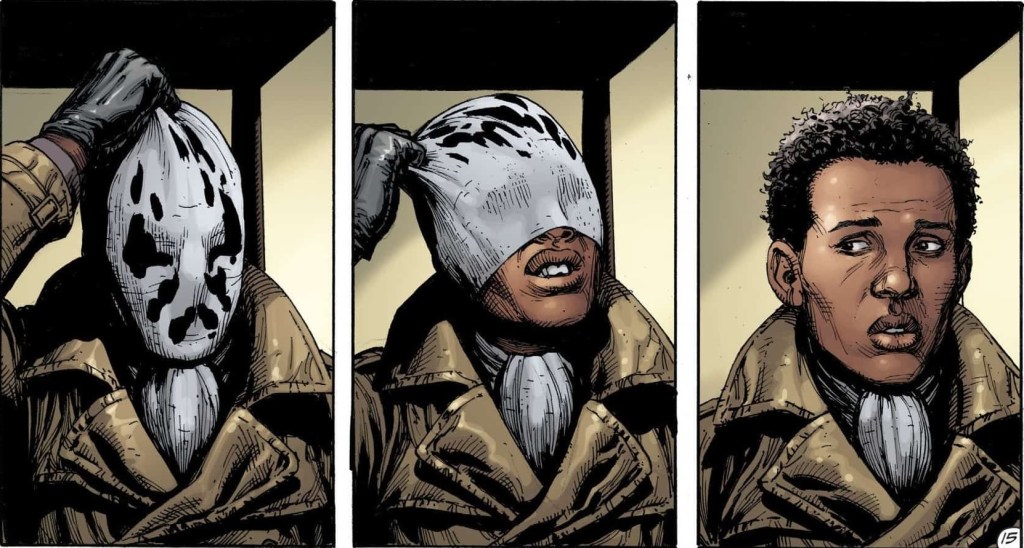
Reggie Long is the son of Malcom Long, who acted as Kovac’s psychologist while the vigilante was in prison after being framed for murder. Reggie was a normal kid until Veidt’s squid monster appeared in the middle of New York City and killed millions. His parents died during the event, but Reggie was one of the lucky few to survive. However, the event shattered Reggie’s mind, leaving him with permanent psychological damage.
Institutionalized and with everyone he knew and loved dead, Reggie felt that he had nothing left to live for. This mindset changed when Reggie became friends with Byron Lewis, the retired hero known as Mothman. Bryon showed Reggie kindness when no one else would and trained him to be a fighter. Byron also gave Reggie the first half of Malcom’s notes on Kovac, which led to Reggie forming an obsession with his father’s patient. Malcom described Kovacs as a friend, and had hopes that he could help the vigilante see that there was still good in the world. Eventually, Reggie escaped the asylum to get revenge against Veidt for the deaths of his parents when the villain’s plans were exposed.
Since Reggie believed that Kovacs and his father were friends, he donned the ever-changing mask and became the new Rorschach. In a desperate attempt to connect with his deceased father and let out all the rage he felt from his trauma and loss, Reggie let the Rorschach identity consume him. He refused to be called anything other than Rorschach and tried his best to mimic his idol’s mannerisms and sense of justice. Reggie became even more violent and emotionally unstable as he tried to emulate Kovacs. Such a dynamic between a legacy hero and the mantle they acquire has rarely been depicted in comics. However, the original, more idealistic Reggie emerged when he finally confronted Veidt to kill him. Instead of seeing a vicious villain, Reggie saw a man filled with regret over what he had done. As a result, rather than killing him, Reggie decided to help Veidt find Dr. Manhattan so that he could save their world from World War III.
Reggie Challenges the Idea of Hero Worship
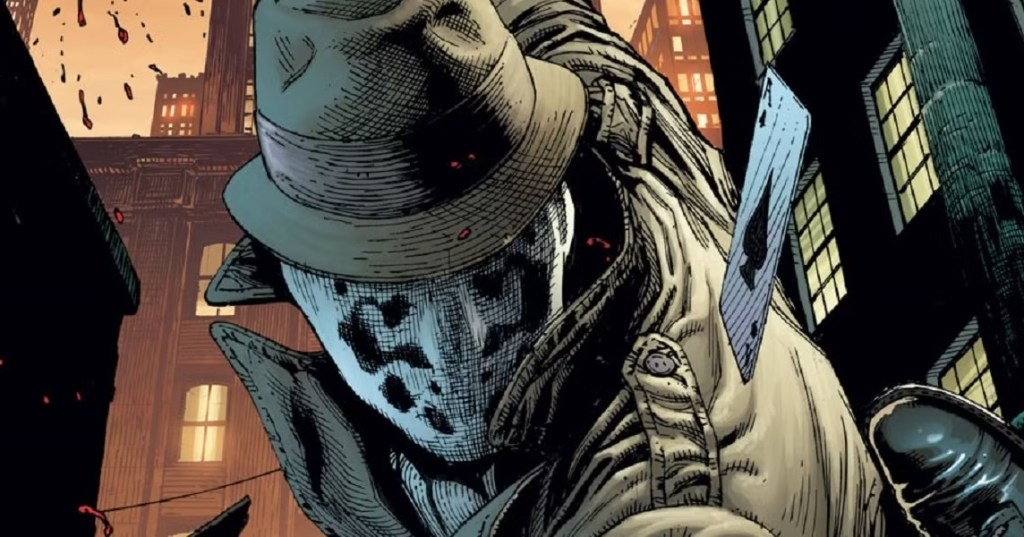
Legacy heroes often put their predecessors on a pedestal, which then motivates them to continue their heroic mission. However, for Reggie, that pedestal was broken. After travelling to the DC Universe and finding Dr. Manhattan, Veidt reveals to Reggie that he never felt guilt over his actions and he manipulated Reggie to help him on his quest. To make things even worse, Veidt revealed the dark truth of the relationship between Malcom and Kovacs. They were never friends, and Kovacs’s sick and twisted mind shattered Malcom’s undying positivity.
Where once Malcom could see the beauty in the world, Kovacs’s horrific stories of what he saw as a vigilante unraveled his worldview and left him an empty husk of a man. To make matters worse, Malcom’s obsession with figuring out Kovacs’ psyche caused his marriage to fall apart, and his wife left him. Reggie’s parents each died alone during the night of Veidt’s attack, not in a loving embrace as Reggie had believed. Malcom wrote about his downward spiral in the second half of his journal, which Reggie’s mentor, Byron, kept from his protege so that he didn’t become disillusioned with both his parents and superheroes. The revelation shattered Reggie’s perception of reality because the man he idolized had ruined his parents’ lives. He then discarded the mask and said that Rorschach was dead.
What is so fascinating about this development is that it’s such a rare story direction for legacy superheroes. Usually, when legacy heroes idolize their predecessors, their expectations are never shattered. You would never see Barry Allen become disillusioned with the original Flash, Jay Garrick. This is because in DC Comics, the people who inspire such generational superhero mantles are for the most part well-adjusted and selfless individuals with no dark secrets to hide. In the world of Watchmen, however, there are no heroes that fit such a description, least of all Kovacs.
By taking this direction, the story explores the concept of a broken pedestal, highlighting how many well-renowned public figures have their images and legacies tarnished once their immoral beliefs and/or actions are exposed to the public. When such secrets are exposed, people who once admired them rightfully turn against them as their perceptions of their idols were revealed to be the products of lies and wishful thinking. It’s this idea that inspired the mantra “never meet your heroes.” To see DC Comics, a company built on the themes of idealism and legacy, tackle such a complex and real-world issue is shocking, ground-breaking, and deserves to be recognized.
How Reggie Reinvents Rorschach’s Legacy
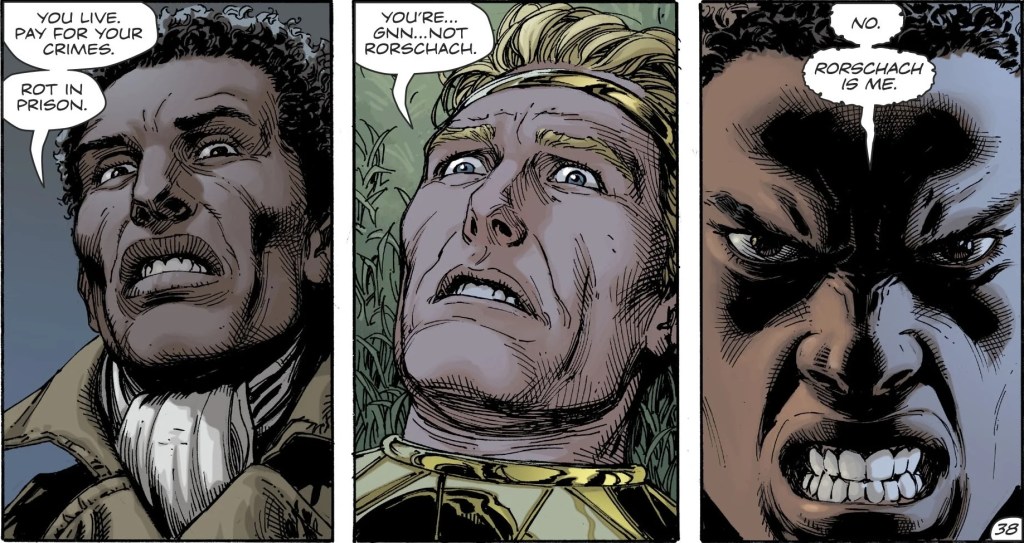
Countless superheroes in DC Comics assume the mantles of older heroes, carrying on their legacies of truth and justice into the future. However, with a legacy as rotted and hateful as Kovacs’s, Reggie wanted nothing to do with it anymore after he discovered the truth about his “hero.” Through the machinations and interference of Dr. Manhattan, the DC Universe was on a path of self-destruction similar to the one affecting the WatchmenUniverse.
All of this, in addition to Reggie’s disillusionment, caused him to spiral into a pit of hopelessness as he resigned himself to living on the streets and waiting for both worlds to come to an end. However, when all seemed lost, Reggie found a new lease on life from two unlikely people: Batman and Alfred. They told him that Kovacs was indeed a monster and that the Rorschach mask and mantle carry this dark history. However, Batman also counselled Reggie that he could take the mantle for himself and transform it into something better. Like a real rorschach test, Reggie can help people see something else when they look at the mask; he can make them see hope. The only way to do that, however, is to be willing to stand up and fight for what’s right and not give in to despair.
Batman’s words of wisdom struck a chord with Reggie. After Superman successfully managed to convince Dr. Manhattan to save both worlds with his godly powers, Reggie confronted Veidt. But then, without warning, the resurrected Watchmen member, the Comedian, appeared and shot Veidt in the stomach. With Veidt dying, it seemed that Reggie would get his revenge for his parents’ deaths. However, where Kovacs would have let Veidt die to fulfill his twisted sense of vigilante justice, Reggie, unlike his predecessor, refused to let his anger consume him. In the ultimate symbol of reinventing the Rorschach mantle, Reggie took the mask off and used it to stop Veidt’s bleeding, saving his life. Reggie no longer sought vengeance; he wanted real justice and for Veidt to face the consequences of his crimes in a court of law. Where once Reggie let the mantle of Rorschach define his life and sense of self, now the Rorschach mantle became his to reinvent as he wished. It was never the mask that made the hero; it was always the man who donned it and how he chose to use it.
Although Reggie hasn’t appeared since Doomsday Clock, the way he reinvented a twisted anti-hero’s legacy into something better is a story that is thought-provoking and deserves to be remembered. Reggie allowed his own sense of hope and justice to redefine the legacy of Rorschach. Instead of simply following in the footsteps of a virtuous hero like other legacy characters, Reggie recognized the faults of his predecessor and decided to do something about it. Reggie refused to allow Kovacs’ cruel ideology to taint him or the world anymore. He also wouldn’t let the Rorschach mantle overtake and corrupt his own identity and sense of justice. He transformed the Rorschach mantle into something that stands for real heroism and hope. Reggie’s character journey demonstrates that we must be willing to acknowledge past injustices to learn from our mistakes and build a brighter future.

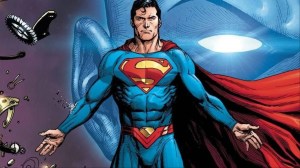



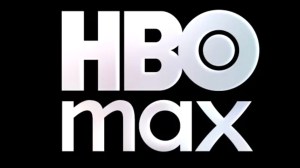


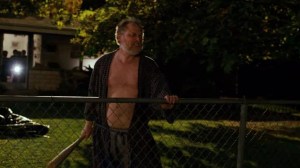
![Simu Liu Confirms The 2 Dream X-Men Shang-Chi Works With On Avengers: Doomsday [Exclusive]](https://comicbook.com/wp-content/uploads/sites/4/2025/12/Simu-Liu-Avengers-Doomsday-interview.jpg?w=300)